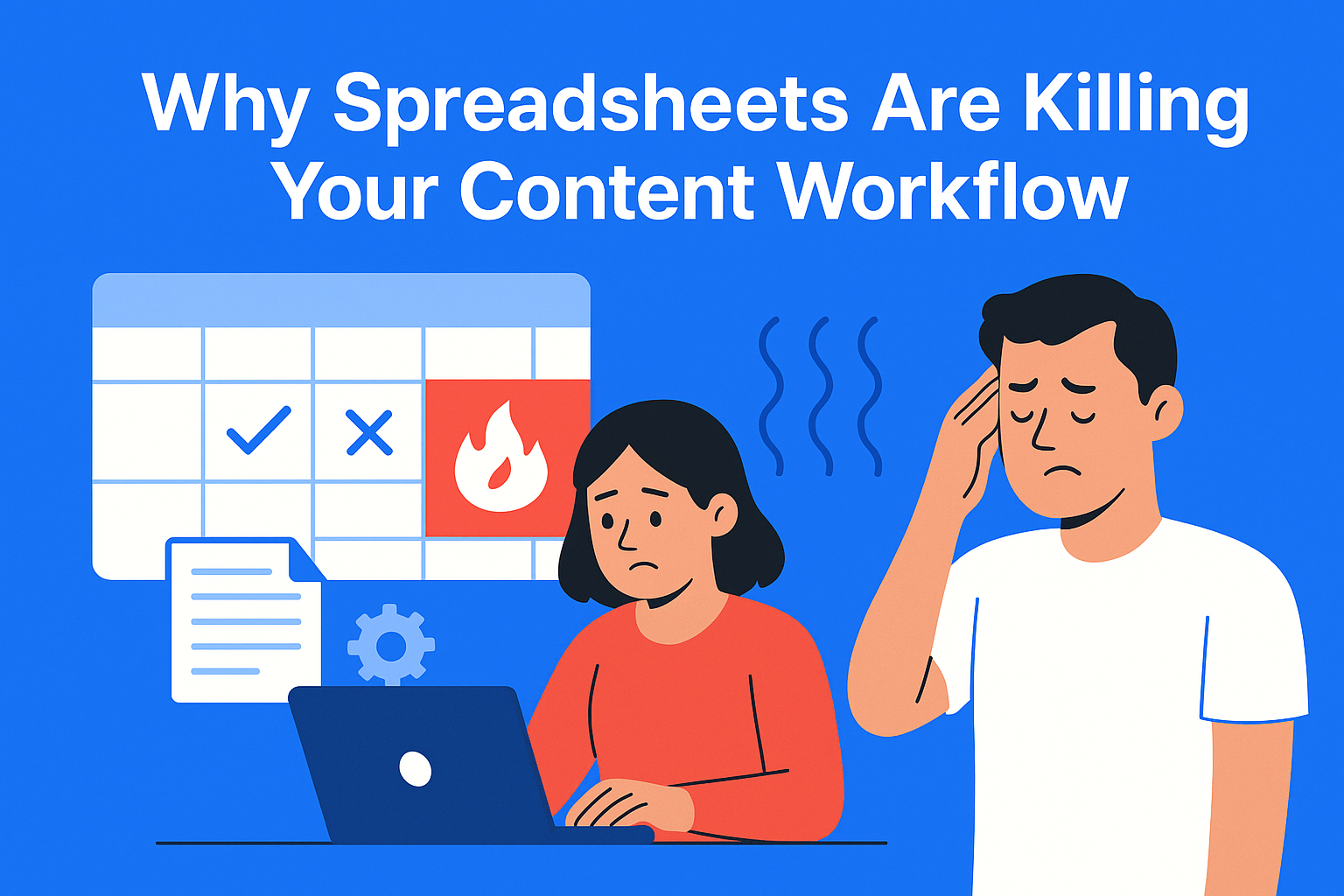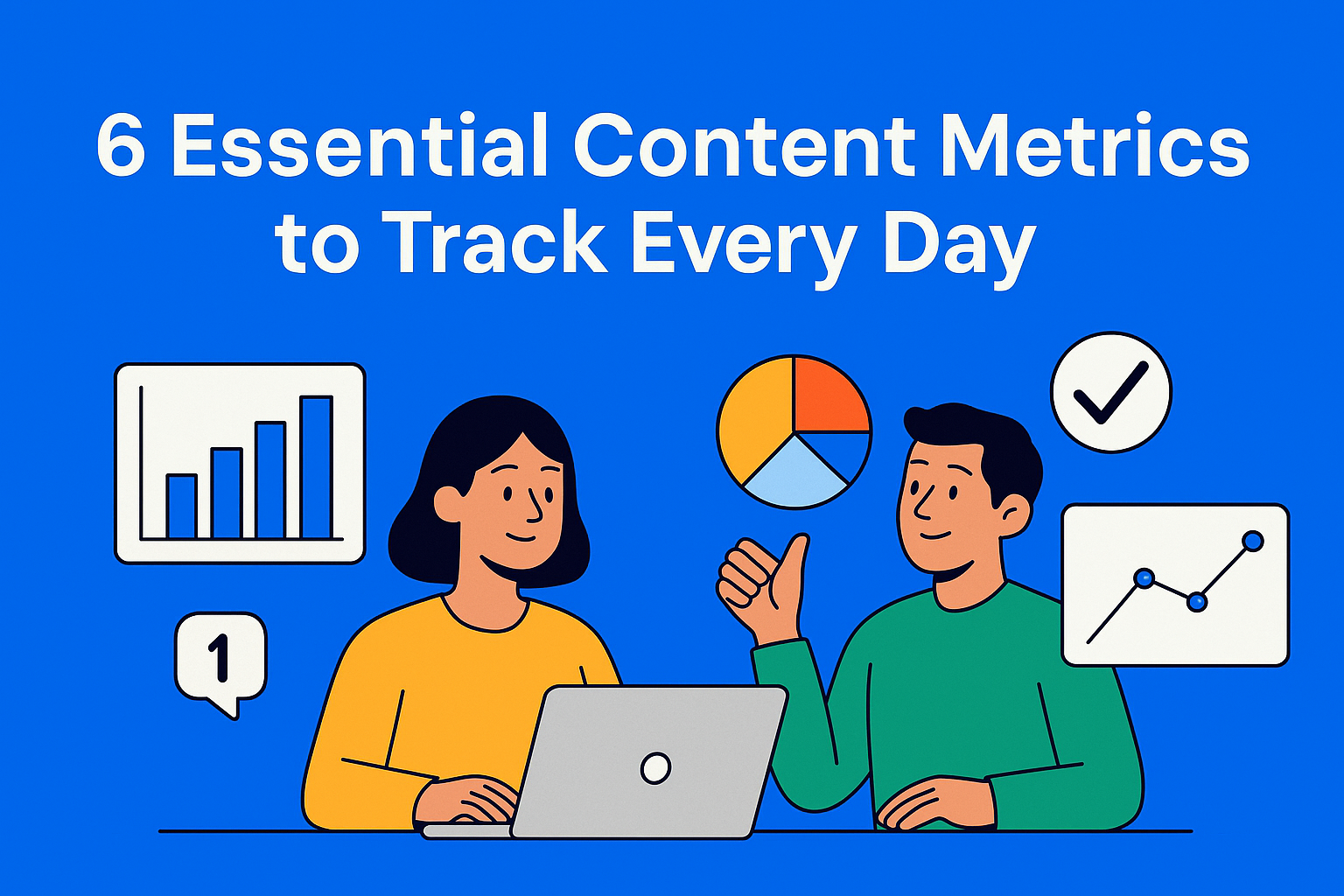Why Spreadsheets Are Killing Your Content Workflow (and What to Do Instead)
Stuck in messy content workflows? Spreadsheets slow teams down, causing missed deadlines, burnout, and chaos. Discover why it's time to ditch sheets and upgrade to a purpose-built content platform that boosts clarity, collaboration, and output.

Spreadsheets weren’t designed for content workflows. They were built for numbers. For formulas. For budgets and forecasts, and tidy little data sets.
But content? Content is messy. It's multi-layered, cross-functional, and constantly moving. And while spreadsheets might feel like a good starting point, especially when your content operation is just a handful of blog posts and a couple of people, they quickly turn into a minefield once production ramps up.
Eventually, something breaks. And chances are, it’s your team.
Key Takeaways
- Spreadsheets weren’t built for content workflows - they fall apart as your team scales.
- The “Sheet + Doc” system breaks down when you’re juggling multiple people, tools, and deadlines.
- Hidden costs of spreadsheets include lost time, poor visibility, missed deadlines, and team burnout.
- If you're managing 10+ pieces or 3+ stakeholders per asset, it’s time to upgrade your system.
- Purpose-built platforms like EasyContent centralize, streamline, and eliminate friction in your content workflow.
From “It Works for Now” to “Everything Is on Fire”
When we talk to teams switching to EasyContent, nearly all of them have one thing in common: they’re stuck in the Sheet + Doc system.
It goes like this:
Someone builds a spreadsheet to track content. Then each content piece lives in a separate Google Doc (or folder, or Notion card, or whatever the flavor of the month is). Then you manually update statuses, ping people for approvals, and maybe try to add some color coding or automation hacks to make it “work.”
At some point, the system that used to feel organized becomes the thing slowing you down.
You miss deadlines.
You lose content.
You burn out your team trying to keep everything updated and in sync.
The Real Cost of the Spreadsheet Strategy
On the surface, spreadsheets are free. But that’s just the sticker price. The actual cost shows up elsewhere - in ways that hurt your team and your outcomes far more than you think.
Here’s what we mean:
- Wasted time: Manually updating statuses, searching for links, and chasing approvals eats up hours every week.
- Lost visibility: You don’t know who’s working on what, what stage it’s in, or whether it’s stuck without scrolling through tabs and pings.
- Missed deadlines: When no one has a clear view of the full pipeline, content slips through the cracks.
- Burnout: The cognitive load of managing content across multiple disconnected tools is exhausting, especially for content leads.
- Content gaps: It’s easy to duplicate ideas or miss key topics when you don’t have a clean, central overview.
Individually, these might not feel like deal-breakers. But they compound. And over time, they lead to dysfunction: frustrated writers, inconsistent output, and a process that no one trusts.
How to Know You’ve Outgrown Spreadsheets
The tipping point isn’t always obvious, but there is a point where spreadsheets stop helping and start hurting.
Here are some signs your team has outgrown them:
- You’re managing more than 10 content pieces at a time
- You have more than 3 people involved in each piece - writers, editors, reviewers, designers, etc.
- You spend hours every week just providing status updates
- You’ve lost track of a piece mid-cycle and had to scramble to figure out what happened
If any of these sound familiar, you’re not alone. These are common growing pains. They’re also clear signs that it’s time to move to a platform designed for content creation.
What a Purpose-Built Content Platform Does Differently
Spreadsheets treat content like a static checklist. Platforms like EasyContent treat content like a living process - with people, deadlines, dependencies, and feedback loops.
Here’s how that shift changes everything:
- Centralized content hub. Every piece of content, from brief to final draft, lives in one place. It's not scattered across Docs and folders.
- Clear workflows. Assign roles, set deadlines, and automatically move content from one stage to the next without micromanaging.
- Real-time visibility. Know what’s on track, what’s blocked, and what’s overdue, without sending a single message.
- Simplified collaboration. Editors, designers, and stakeholders can all work together without stepping on each other’s toes.
Yes, these tools cost money. But they save something much more valuable: time, energy, and the sanity of your team.
“Free” Tools Often Cost More Than Paid Ones
When teams hesitate to switch, it’s usually because they’re trying to be budget-conscious. We get that. But there’s a difference between being cost-efficient and being stuck in a system that drains your resources.
A free tool that slows you down is more expensive than a paid one that makes you faster.
A free tool that creates confusion is more expensive than a paid one that brings clarity.
A free tool that burns out your team is more expensive than one that helps them thrive.
We tend to measure cost in dollars. But the true cost of a tool (especially for growing content teams) is measured in time, trust, and how well your people can do their jobs.
So, if your spreadsheet system is starting to crack… It’s probably time to ask what it’s really costing you.






